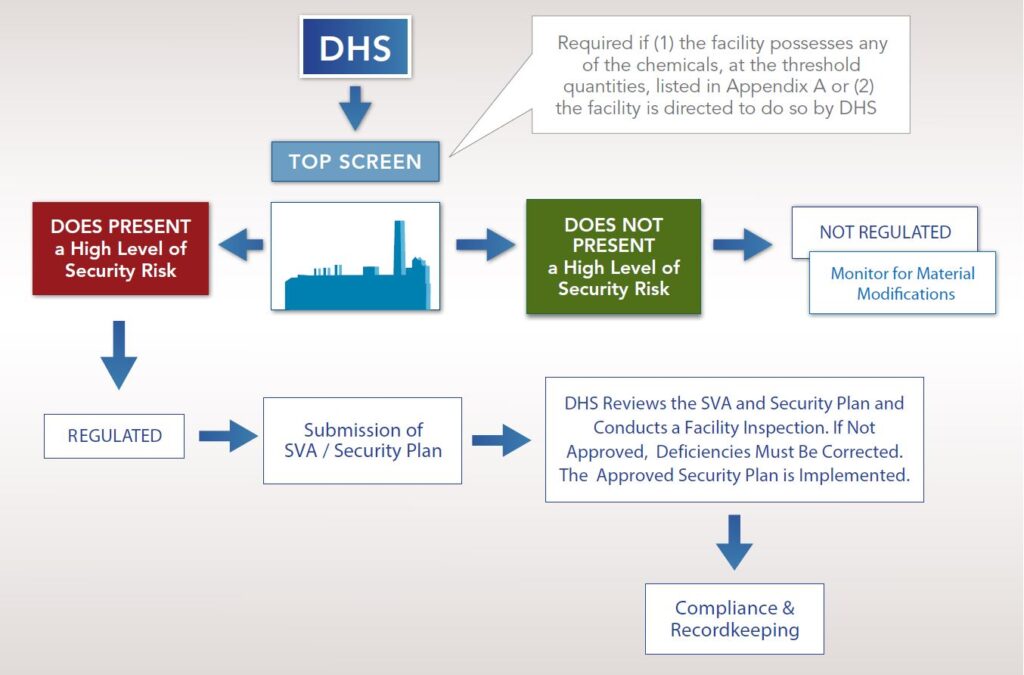In late 2006, Congress passed the Department of Homeland Security Appropriations Act of 2007, which gave the Department of Homeland Security (DHS) authority to regulate the nation’s highest-risk chemical facilities and directed DHS to develop chemical facility security regulations.
On December 18, 2014, President Obama signed the Protecting and Securing Chemical Facilities from Terrorist Attacks Act of 2014 (the Act) into law. The Act, which came after more than six years of congressional debate regarding reauthorization periods and the general scope of the Chemical Facility Anti-Terrorism Standards (CFATS) program, provided independent CFATS authorization (and funding) through 2018. In January 2019, President Trump signed the Chemical Facility Anti-Terrorism Standards Program Extension Act into law, which extended the CFATS program through April 2020. Then, in July 2020, President Trump signed into law a three-year re-authorization of the CFATS program. This re-authorization extends the CFATS program in its current form (i.e., without any changes) until July 27, 2023.
Published at 6 CFR Part 27, CFATS is a right-to-operate regulation that requires “high-risk” chemical facilities to enhance security. Generally, the type and amount of chemicals a facility possesses determines whether it is “high-risk” and to what extent the facility is subject to regulation. The CFATS regulatory process can be broken down into four phases:
(1) Submission of a Top-Screen;
(2) Notification of a Risk Tier Determination;
(3) Submission of a Security Vulnerability Assessment (SVA) and Site Security Plan (SSP) or Alternate Security Program (ASP); and
(4) Ongoing Compliance.
Through each phase of the CFATS regulatory scheme, we have worked with some of the nation’s largest companies since 2007 to develop CFATS compliance strategies that leverage practical solutions, reduce the ongoing compliance burden, and create sustainable CFATS programs.
